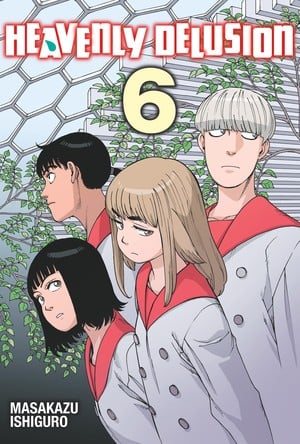Crafting a Hell in Heaven with Heavenly Delusion Creator Masakazu Ishiguro

© 2023 DENPA
Manga creator Masakazu Ishiguro‘s work spans multiple genres, from the unexpected maid café workers in the comedy manga And Yet the Town Moves to the labyrinthian detective story Skygrazer. Of these works, Heavenly Delusion stands apart as a concoctive blend of body horror and gender euphoria/dysphoria in the post-apocalyptic ruins of Japan. Monsters lurk in the dark, and some of them are human.
We spoke with Ishiguro about the hazy edges of his sci-fi series’ themes and the message he hopes readers takes away from the series.
It appears that there are two worlds within Heavenly Delusion, the school where Tokio lives and the ruins of a civilization that Kiruko and Maru are exploring. When did you start planning this story, and what inspired the manga’s setting?
Masakazu Ishiguro: I have a vague memory, but I drew a concept art for the cover of Comic Ryū magazine in 2013, which became Heavenly Delusion later. I suppose that the planning already got started by at least in 2013. The manga’s setting was influenced by not only my favorite manga and anime but also my interest in artificial intelligence, Kojiki (Records of Ancient Matters, the earliest historical record of Japan), and human beings themselves.
Gender expression and sexual identity seem to be important themes in the story. How did you decide to approach this aspect regarding Kiruko and the school-like setting?
ISHIGURO: As for Kiruko, the character represents not a binary of “male” or “female” but rather a gradation of spiritual sexuality. The school is depicted as a kind of thought experiment in a world where sexual elements are abolished.
Kiruko and Maru are searching for “Heaven” while the children behind the walls believe outside is “Hell,” what do you imagine makes a place “Heaven” or “Hell” in this world, and how does it relate to the manga’s title?
ISHIGURO: It’s the heart of the story. Heaven and hell have many layers of meaning. On the surface of the story, heaven looks like “a life without inconvenience,” and hell “a life after (the modern civilization) collapsed.” However, life at the supposedly heavenly Takahara Academy seems enveloped by a disturbing atmosphere, while life after the civilization collapsed even looks lively and joyful. Life in “heaven” and “hell” will show different aspects as the story unfolds. I’m considering making the title’s meaning explicit as a final conclusion.
The Man-Eaters come in a variety of forms. When it comes to the Man-Eater that ate Haruki, the way it eats resembles a starfish or an infection. Was this intentional?
ISHIGURO: Well, in particular, the infectious diseases are close to the image I intended. I bear in mind bacterial or amoeba predation or cancer cell erosion.
What’s your process for designing a monster?
ISHIGURO: It depends on the time and occasion. Sometimes, I design monsters based on the creatures from the past, such as Cambrian-period organisms. Other times I consider shapes to fit the required abilities to further the story. For example, the story won’t work unless it flies or crawls slowly.
When do you think you first became interested in the sci-fi genre? What is it about sci-fi that continues to inspire you creatively?
ISHIGURO: I don’t remember if I was aware of “SF” at the time, but I was reading the manga by Fujiko Fujio in elementary school. It was my entrance to SF. The science fiction genre is such a high threshold that I hesitate to recognize my work as science fiction. But I keep trying to get closer to science fiction.
How do you feel you’ve developed as a manga creator from your debut until now?
ISHIGURO: I don’t know if I can call it growth, but the amount of detail I draw in has increased and my work has become slower.
Can you talk about the familial relationships in Heavenly Delusion and how they are “corrupted?” For instance, Kiriko and Haruki’s sibling relationship is especially atypical, but there’s also the lack of parental figures in the walled school and the mother and “son” (Man-Eater) that Kiruko and Maru encounter.
ISHIGURO: If I put it bluntly, that was because the story was inspired by mythology. You know, kinship in mythology is in disarray. Kojiki (Japanese mythology), which Heavenly Delusion is based on, also has such elements.
Are there any messages or themes in Heavenly Delusion that you’d like readers to consider about their own lives or the real world?
ISHIGURO: Those things are embedded in this manga. I hope that you will sense them as you read it. To put it simply, it is “What is ‘human?'” and “What is ‘human-like?'”
Heavenly Delusion manga volumes 1-6 are currently available from Denpa Books. Thank you to Denpa Books for coordinating this interview.
Source link
#Crafting #Hell #Heaven #Heavenly #Delusion #Creator #Masakazu #Ishiguro




